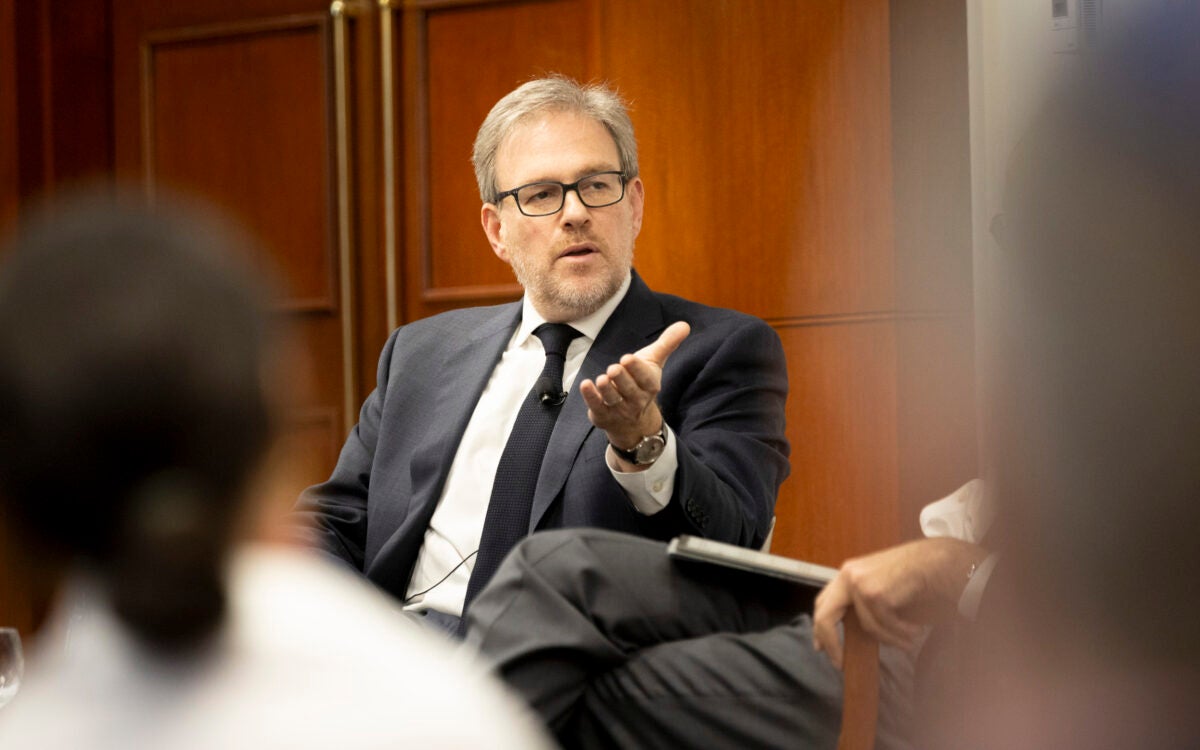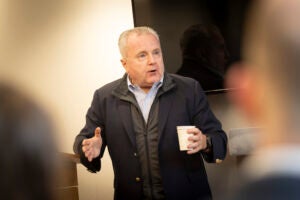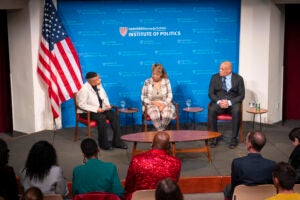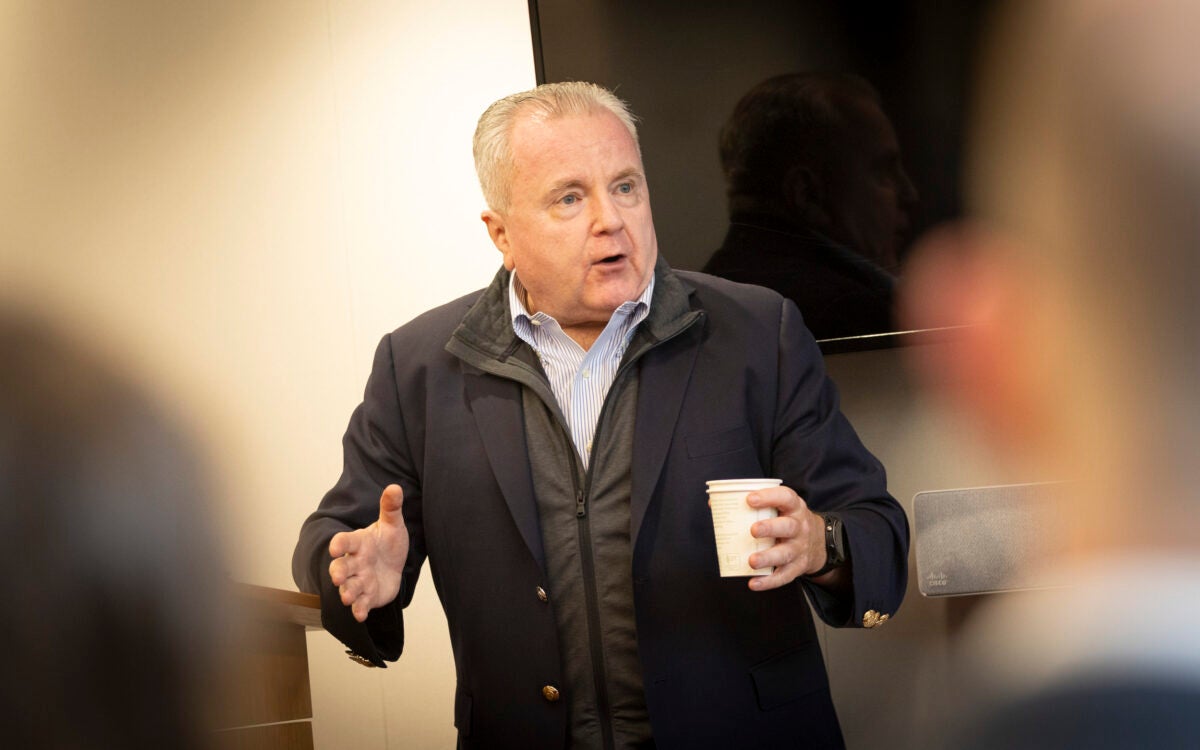Figure it out yourself
No learning without doing, future teachers find
On the first day of class, the instructor handed out spaghetti, string, tape, and marshmallows to the eight students gathered around a table and asked them to build the tallest possible freestanding structure and place the marshmallow on top, in 18 minutes.
Created by the designer and author Tom Wujec to foster teamwork, leadership, and creativity, the “marshmallow challenge” was the perfect tool for Victor Pereira Jr. to start his “Introduction to Teaching Science” course on a summer afternoon.
“Science is about problem-solving and collaboration,” Pereira, a lecturer in education at the Harvard Graduate School of Education (HGSE), told the students. “Everything you need to know about science instruction is in the marshmallow challenge.”
Students worked in groups to build the spaghetti structures. When time was up, their creations wobbled for a few seconds before collapsing under the marshmallow’s weight.
“Is there something I could have done to help you succeed?” Pereira asked his students. After a brief conversation, one worried aloud that the teacher’s help would have limited their ability to learn on their own.
Pereira, who has 14 years of experience teaching high school science in Boston Public Schools under his belt and who is also master teacher in residence of the Harvard Teacher Fellows Program, smiled knowingly. The answer is at the center of a long and passionate debate in education, with experts divided over whether freedom or structure is the best way to maximize learning.
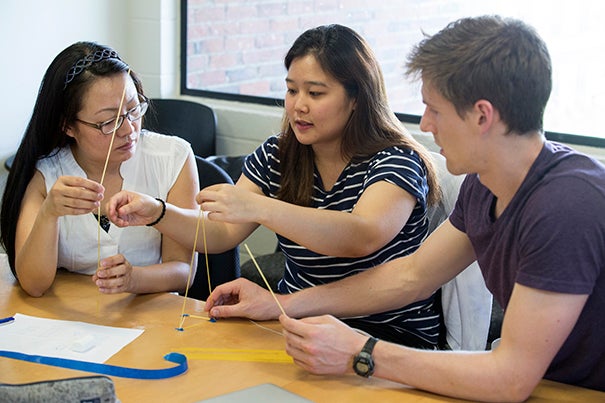
“Do we let students discover things on their own or do we give it to them?” said Pereira. “There is room for both. Are we training students to be scientists or are we helping them become scientifically literate and informed citizens?”
Students take Pereira’s class in the summer, absorbing teaching pedagogy by learning how to design inquiry-based lessons, developing syllabi and curricula, and reflecting on their role as educators. In the fall, they take a full-time session in which they focus more on teaching science.
Pereira’s is among the courses offered through the Teacher Education Program, an 11-month master’s program at HGSE that aims to improve teaching in urban public schools and help students become independent learners and critical thinkers.
Open to both recent college graduates and mid-career professionals, the program offers hands-on teaching experience at schools in Boston, Cambridge, Somerville, and Chelsea, with a special focus on social justice and equity issues. Along with classes on how to teach science, English, history, and social studies, future teachers also take courses on race and power in urban classrooms, urban youth, and teaching in urban schools.
The social justice component was a big draw for Sam Fogel, who dreams of helping high school students examine biology and race, nutrition and health, and asthma and pollution.
“The reason why I’m here is to learn more and be a better educator,” said Fogel. “Our role as educators is to make students aware of issues of inequity around the country and the world. I want my students to be aware of what’s going around us even if [it’s] not directly related to our material.”
Pereira’s course also stresses the need to make science relevant to students’ everyday lives as opposed to asking them to memorize facts, theories, and formulas. Science is about making observations, finding patterns, and asking questions, all of which are applicable in any field, Pereira noted.
The future teachers are sent into the field to co-teach with veteran educators and learn by doing how to prepare lessons and deliver them. For Emily Donaldson, this has proved a valuable step toward teaching with confidence.
“We’re learning how to manage the classroom,” said Donaldson, who loves biology and teaching and is balancing the program with her senior year at the College. “Also, how to deliver inquiry-based instruction, facilitate discussion, and how to prepare for classes so that we’re able to anticipate anxieties.”
The program has helped Erin Bleck be more mindful of the impact she can have as a teacher in city schools. “Harvard has pushed me one step further,” said Bleck, who taught before entering the master’s program, “and has made me think what it means for me and my students.”
For Pereira, the program’s main takeaway is experience-based learning. In the marshmallow challenge and beyond, teachers have to help students gain the tools to discover things on their own.
“Some beginning teachers, and even veteran teachers, like to be efficient and say everything to the students,” he said. “Our future teachers are learning that they have to design instruction where students are in charge of their own learning. They have to let students be the navigators in the classroom instead of the audience.”
